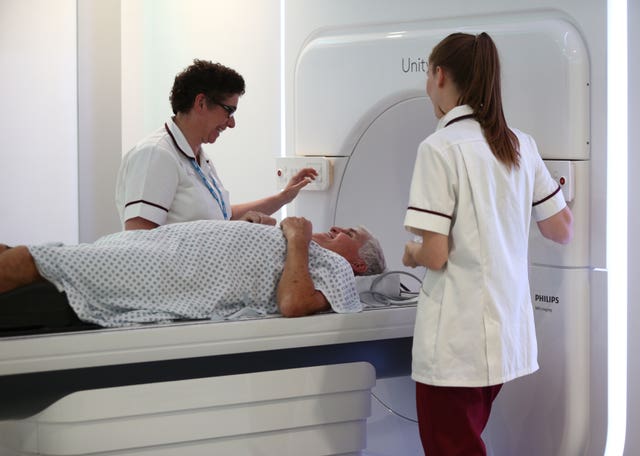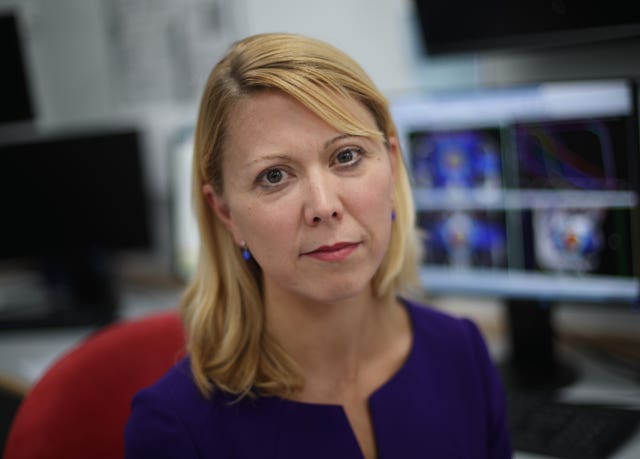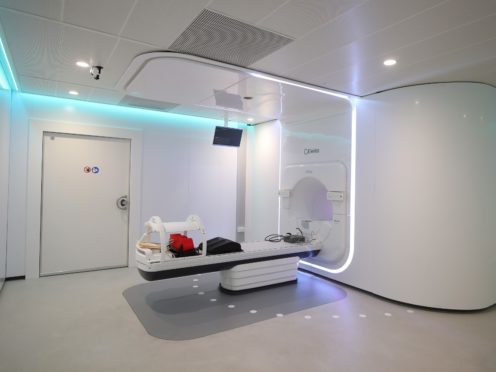The first UK patient has received radiotherapy using a machine which could one day cure some cancers in a single treatment.
The Royal Marsden Hospital and Institute of Cancer Research (ICR) in London are only the third centre in the world to use the technology, which can track the shifting position of tumours in real time.
The MR Linac machine, described as a “dream come true” for radiologists, is unique in generating magnetic resonance images (MRI) while also delivering X-ray radiation beams.

Barry Dolling, 65, who was diagnosed with early prostate cancer in April, said he “jumped at the chance” to be the first in the country to try the technology.
He will receive four weeks of radiotherapy as part of a small clinical trial of patients with localised prostate cancer at the Royal Marsden – the culmination of six years of work.
Many cancer tumours shift position during radiotherapy or between scanning and treatment.
Breathing, bladder filling or bowel changes can all affect the location of cancer, raising the risk of radiotherapy being off-target.
However the MR Linac machine allows clinicians to constantly monitor the location of the tumour while delivering treatment.

Professor Uwe Oelfke, head of the joint department of physics at the ICR and Royal Marsden, who leads the project, said: “For us, it is a dream come true, because for the first time we can actually see what we are treating.
“We can see the tumour when it’s moving, we can see the organs that are raised, we can see daily changes like shrinking of tumours or swelling of tissues. You can react to everything that’s happening.”
Clinicians using the machine take an MRI scan of the patient, before designing a plan for radiotherapy for that day, reacting to any changes in the anatomy.
This can also be adjusted in real-time, as treatment is delivered.
The UK trial will initially examine prostate cancer, but it is hoped the machine will improve radiotherapy for a wide range of cancers, including hard-to-treat lung and pancreatic cancers.
Dr Alison Tree, consultant clinical oncologist at the Royal Marsden and lead investigator of the trial, said: “Prostate cancer responds most effectively to large doses of radiation delivered over a short period of time.
“However, because the prostate lies close to the rectum, high doses risk damaging the recum and increasing side-effects.
“With the MR Linac we can better target the prostate while avoiding the rectum, so we can safely deliver higher doses of radiation.
“It is possible that this groundbreaking precision will one day make it possible to cure prostate cancer in a single treatment.”

She added: “That is science fiction at the moment unfortunately, but that’s our dream really, that we can use the precision of this technology to test shorter ways of delivering radiotherapy.”
Mr Dolling, a father-of-two from Selsdon, Surrey, said the limited side effects of the treatment allows him to continue working, playing golf and cycling.
He said he feels “very privileged” to be the first UK patient to use the machine, adding: “It’s a very nice thought to think my treatment and the research they are doing with me will go on to help other people in the future.”
The Royal Marsden is one of just seven centres in the world to have installed the machine, enabled by a £10 million grant from the Medical Research Council.
More than 12,000 tonnes of earth was excavated to create a bunker to house the technology at their site in Sutton. The space is large enough to fit 24 double decker buses.
An international consortium was formed in 2012 to oversee the project, led by a Dutch team and UK-based company Elekta, which makes the machine.
The University Medical Center Utrecht in the Netherlands became the first to use the machine in August.
